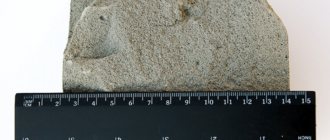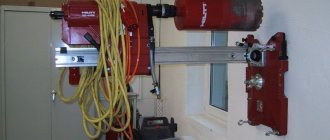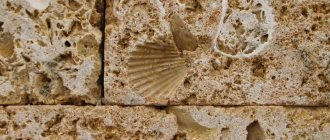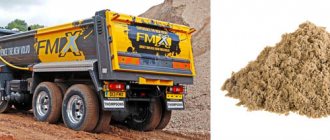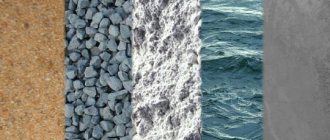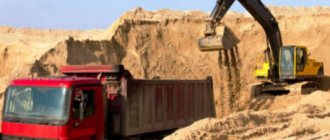What is quartz sand?
This sand is a loose granular material of mineral origin.
It is characterized by increased sorption capacity, fire resistance, chemical inertness, and resistance to destruction. The crystalline structure of sand makes it more protected from acidic and alkaline environments.
The grain sizes of the material vary from 0.05 to 3 mm, and the sand itself can have a different color, which depends on the presence of certain impurities in its composition. In the absence of such, the material is either colorless or milky in color.
The main difference between quartz sand and other types is its homogeneity, acquired due to the presence of one component - quartz. Therefore, to obtain a product with high-quality characteristics, the sand before use is thoroughly cleaned of any foreign inclusions in it.
As a result, the density of quartz sand differs significantly from the density of river, quarry and construction sand. This type of sand also differs in filtration coefficient, compaction, bulk density and specific gravity.
For more information about quartz sand, watch the video:
Composition and chemical and physical properties of quartz sand
The composition of quartz sand is regulated by GOST 21-38, TU. According to this GOST, the composition must contain at least 95% silicon oxide, the presence of clay no more than 1%, iron no more than 1%. Humidity should not exceed 10%. The color of sand depends on the impurities in it, so the presence of titanium in the composition gives the sand a pink color, iron gives it a brown color, pure quartz has a milky tint or no color. Yellow is usually burnt sand.
However, there are other requirements. For example, if sand is intended for the silicate industry, it can be divided into three classes. Class A must have at least 70% silicon oxide, B - at least 60%, C - at least 50%. Sand for the glass industry is divided according to levels of translucency.
Quartz sand is a very hard, refractory and fireproof material, resistant to acids and alkalis, is not afraid of temperature changes, and is also a dielectric. These properties allow it to be used in various industries. Moreover, the use of quartz sand in a particular area depends on its specific characteristics. The quartz sand that we offer has undergone heat treatment, which is required to eliminate moisture and improve the quality of the sand.
Kinds
This material is divided into several varieties and classified according to three main criteria:
- by field;
- by extraction method;
- according to the shape and size of the grains.
In this regard, the material is divided into the following types.
River
River is the purest product (without impurities) . It has a higher cost compared to all other varieties.
River
Nautical
Marine – fine-grained sand containing clay admixture and silt particles.
Nautical
Ovrazhny
Gully – the fraction is distinguished by its acute-angled shape and roughness . The material contains impurities of silt and earth, which make up a significant portion of the total mass.
Ovrazhny
Used for preparing plaster and concrete mortars.
Mountain
Mountain - in terms of characteristics it is close to the previous analogue .
Mountain
Soil
Soil (cellar) deposits are located under layers of soil and clay.
The material particles also have a rough surface and an acute angular shape. Well suited for construction work.
Soil
According to the extraction method, quartz sand is divided into the following types.
Natural
The material is formed as a result of the destruction of rocks under the influence of natural factors. It is mined using open (mechanical) or closed (hydromechanical) methods.
In the first case, sand is extracted from the bowels of the earth by quarrying.
Career
During the work, special machinery and equipment is used for the extraction and transportation of material. The closed method is the development of underwater sand deposits in the beds of rivers and lakes, as well as in marine areas.
Mining from the riverbed
During mining operations, suction dredgers and floating installations are used.
Artificial (crushed)
The material is mined by blasting quartz rock, resulting in elements of different sizes, which are divided into fractions.
The main advantageous differences between quartz sand and natural material are its monomineral nature and uniformity of composition, as well as its high resistance to chemical environments and mechanical loads.
Based on the size of the grains, quartz sand is divided into:
- fine-grained – particle diameter ranges from 0.05 to 0.25 mm;
Fine grain
- medium-grained - from 0.25 to 0.5 mm;
Medium grain
- coarse-grained - from 0.5 to 3 mm.
Coarse grain
By particle shape:
- round;
Round
- semicircular;
Semicircular
- acute-angled.
Acute-angled
Quartz sands in St. Petersburg and the region
Around St. Petersburg there are quarries where quartz sands with different particle size modulus and chemical composition are mined. In addition to quarry sands, the Leningrad region is rich in river and sea sands, which meet the needs of construction, water treatment and other urban needs.
Why is quartz sand dried?
Drying quartz sand is the first necessary step in preparing sand for further use. In addition to the drying itself, this production cycle involves cleaning the sand from stones, clay and dust.
The next important stage of production is the fractionation of dry quartz sand or the division of sand by grain composition. All sand fractions are in demand on the Russian market. Sand with a grain size of more than 1.25 mm is used for sandblasting surfaces and filling household and industrial water filters for wastewater treatment; medium fractions from 0.63 to 2 mm and fine fractions up to 0.63 mm are used in the production of dry construction mixtures. In recent years, the market for decorative industrial flooring and landscape design has begun to actively develop, where colored quartz sands with different particle sizes are used.
Chemical composition, formula and properties
The basis of quartz sand is silicon dioxide (quartz), the chemical formula of which is SiO2.
During renovations, you will definitely need high-quality tile adhesive to lay the tiles correctly. Here you will find out the consumption of tile adhesive.
The ceresit ct 17 primer, with its excellent technical characteristics, is one of the most profitable, reliable and durable building materials. By following the link you can familiarize yourself with its characteristics.
Currently, decorative plaster is the most popular and progressive finishing material; with its help you can create a unique wall design and hide all defects. Here is information on how to make it yourself.
There are practically no impurities in the composition of this mineral, and only 0.5% may be foreign inclusions: oxides of iron and other metals (for example, Fe2O3, Al203), clay components and other elements (for example, Li2O, CaO, TiO2, K2O, MgO). Due to its chemical composition, quartz sand has high fire resistance and fire safety. It belongs to the category of dielectric materials and is characterized by inertness to many chemicals, as well as a high degree of hardness and refractoriness.
What is quartz sand: composition, characteristics, properties, weight and density
Colored material can be used to highlight road crossings, public transport stops, entrances to industrial facilities or schools.
Sharp turns on highways covered with quartz chips will reduce the danger of driving through such areas. Increased roughness will increase traction and reduce the risk of uncontrolled skidding. You can use quartz sand for garden paths and paths, as well as pedestrian areas. Excellent decorative and hygienic properties will allow you to keep walking alleys in proper shape without much effort.
Quartz sand is virtually indispensable in a variety of applications and is one of the most important components for the home and industry. Technologies using it have been developed to perfection.
Areas of application of quartz
Quartz sand is used in a wide variety of fields - construction, industry, glass production and other areas. Well suited for sandblasting. It is often used for the production of building blocks and bricks, as well as in the production of cement mortars and all kinds of mixtures for laying asphalt.
Brick making
This type of sand is also widely used as an additive when mixing plaster solutions for exterior or interior decoration.
Preparation of plaster mortar
Another area of application for quartz sand is the manufacture of porcelain and earthenware products, which acquire the appropriate properties due to the strength of the material. Sand is also used in glass production.
Glass making
The product in question is also used in the pharmaceutical industry for the production of various types of lenses. The high abrasive properties of the material make it possible to produce perfectly smooth and durable glass.
It is impossible not to mention the use of quartz sand in the food industry, where it is successfully used for water purification. The material copes well with retaining and absorbing harmful substances, which is why it is actively used in modern filters.
Pros and cons of quartz sand
Positive qualities include:
- availability of material;
- natural origin;
- natural appearance;
- uniformity of composition;
- chemical inertness of raw materials;
- natural hardness of the material;
- lack of reaction to carbon dioxide;
- Possibility of planting plants in sand.
In addition to the advantages, quartz molding sand also has some disadvantages:
- presence of dust, requires additional washing;
- due to natural humidity, freezing is possible in the cold season;
- high price of material.

